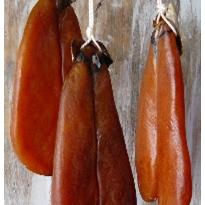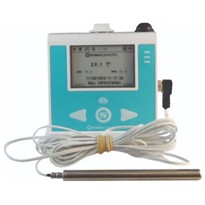FOOD SAFETY FOR DEHYDRATED FRUIT AND VEGGIES
Preserving food when plentiful, to prepare for leaner times, is an ancient practice. There’s evidence cultures in the Middle East and China were using the sun and wind to preserve food such as fish, meat, fruit and vegetables, as far back as 12,000 years ago.
Widely use by combat troops during World War II, dehydrated food, unsurprisingly, fell out of favor with the public after the war. It wasn’t until the cultural revolution of the 1960’s, with a renewed focus on all things natural, that dehydrating foods experienced a renaissance of sorts.
As with all food preservation methods, there are certain steps along the way that present safety issues. Sourcing, producing and storing dehydrated fruits, vegetables and other produce correctly is important. It keeps the food, and the humans who consume it, safe.
SOURCING QUALITY PRODUCE
Dehydrated food is cool again. You only need to check the fruit, veggie and health food aisles. People are living busy lives and want portable, tasty and healthy snacks. And not just snacks. Meals resembling grazing tables are almost the norm in some homes and offices around the world.
With the seemingly endless array of food and diet fads, if people can’t make their own food, they want to know what goes into the foods they do buy.
So, it goes without saying, that means sourcing quality produce.
LOCALLY GROWN FRUITS AND VEGGIES
There’s never been a better time to support local business and buy locally grown, seasonal produce as often as possible. Farmer’s Markets are a great place to start. Buying in season means you’re:
- more likely to buy local produce
- maximising the nutrient content, and;
- getting better value for your dollar.
Not sure what’s in season? Check out the Seasonal Food Guide1 to see what’s in season in your part of Australia.
Australia also has many native flora, including native fruits with ‘unique qualities and potential uses as functional ingredients.’2
Some common commercially produced native fruits:
- bush tomato
- Davidson’s plum
- desert lime
- finger lime
- Kakadu plum
- lemon aspen
- muntries
- quandong
- Tasmanian pepper berry, and;
- Illawarra plum.
OUR ISLAND HOME
To protect our island home, there’s strict regulations around the importation of fresh produce for commercial purposes. As importing fresh produce for personal use isn’t permitted, Australia only imports for commercial purposes. As the Department of Agriculture, Water and the Environment3 outlines:
‘Fresh produce is unprocessed or partially processed fresh fruit and vegetables. Partial processing may include slicing or removing peel.
Imported fresh produce can introduce exotic plant pests and diseases that could be harmful to Australia’s environment, agriculture and economy. To safeguard Australia, we set conditions for the import of all fresh produce to Australia.’
AUSTRALIA’S FOOD LAWS
Foods imported for human consumption must comply with the Imported Food Control Act 1992,4 as well as Australian state and territory food laws. Overseen by the The Department of Agriculture, Water and the Environment,3 imported foods must also meet the standards of the Australia New Zealand Food Standards Code.5 The code is developed and maintained by Food Standards Australia New Zealand (FSANZ).
STORING AND TRANSPORTING FRUITS AND VEGETABLES
Australian Cold Chain Guidelines6 help maintain the safety and quality of food products as they’re handled, transported and stored.
‘The Cold Chain consists of a series of businesses engaged in manufacturing, transporting, storing, retailing and serving fresh, chilled and frozen foods.
Over the last two decades, the distance that foods travel from paddock to plate has increased. The average food is moved in and out of refrigeration control 14 times before consumption.’
hat leaves a lot of room for contamination as the produce moves from producer to consumer.
The Cold Chain conditions are set out in three rules:
- Never warmer than rule, which is about temperature
- Maximum ‘Out of Refrigeration rule, which is about time
- First expiry, first out rule, which is about stock rotation.
While the manufacturer can set any never warmer than and keep above temperatures, cold chain guidelines strongly recommend:
- Chilled foods must be transported, stored and handled at temperatures never warmer than +5°C; and
- Frozen foods must be transported, stored and handled at temperatures never warmer than -18°C.
Those in the cold chain should also regularly review policies and operating procedures as part of Hazard Analysis Critical Control Points (HACCP) and internal Food Safety Programs.
WHAT THE HACCP
Originally developed by NASA and a group of food safety specialists in the ‘60s, Hazard Analysis Critical Control Point (HACCP) is an internationally recognised food safety and risk assessment plan. The plan outlines seven key principles in food safety:
- Hazard Analysis
- Critical Control Points
- Critical Limits
- Critical Control Monitoring
- Corrective Action
- Procedures
- Record Keeping.
While not mandatory, Australian providers to the food industry can have their products endorsed as food safe under HACCP Australia7 guidelines.
PRE-TREATING FRUITS
Some fruits, such as apples, bananas, nectarines, pears, peaches and apricots will benefit from some pre-treatment before drying. Pre-treating with an acidic solution like citric acid or ascorbic acid will:
- Reduce oxidation
- Helps destroy harmful bacteria
- Gives a better colour
- Helps reduce vitamin loss, and;
- Lengthens shelf life.
Other methods of pre-treating are:
- Sugaring - soaking fruits in a sugar syrup for up to 18 hours
- Sulphuring - sulphur is ignited and burned in an enclosed box with the fruit
- Sulphite dips - sodium bisulphite, sodium sulphite or sodium meta-bisulphite are dissolved in water and used as a fruit soak
- Fruit juice dip - a juice high in vitamin C, such as lemon or pineapple juice, can be used instead of an ascorbic acid mix
- Steam blanching - fruit and vegetables are steamed over boiling water. However, this can change the flavour and texture
- Water blanching - place vegetables in water than has been brought to a rolling boil. Times vary based on the vegetable.
DRYING PROCESS
The drying process removes moisture from the food. This also hinders the growth of mould, bacteria and yeast and ensures the dehydrated fruit and vegetables don’t easily spoil.
A major contributor to drying food is humidity. As drying involves removing the moisture from the food and releasing it into the surrounding air, low humidity helps the drying process. This is why the drying of foods originated in the warmer and drier countries around the planet. Higher humidity will slow down the drying process as the air would also be heavy with moisture. Increasing air flow can speed up the drying process.
WATER ACTIVITY
Water activity (aw) is a measure of available water in food. That’s not as simple as how much water is in the food though, as some water is bound to other ingredients – like sugar or salt – and isn’t available. In the context of dehydration, this is important as it is the available water8 that microorganisms will use to facilitate growth.
When too much water is available, microorganisms can grow. Pure water has aw = 1.00 and fresh fruits and vegetables have aw = 0.98. The Food Authority of NSW9 recommends drying fruits to aw = <0.85 to 0.55.
The safest and most accurate way to monitor water activity is by using a water activity meter. It is also possible to measure weight loss to determine moisture loss, but this is not recommended for commercial applications.
PACKAGING AND LABELLING
Food labelling standards in Australia and New Zealand are covered in the Food Standards Code. The standard covers requirements including:
- Country of origin labelling
- Food allergies and intolerances
- Ingredients list and percentage labelling
- Nutrition, health and related claims
- Nutritional information
- Pregnancy warning labels
- Truth in labelling, weights and measures and legibility
- Warning and advisory statements.
While some of these may not apply to fresh fruit and vegetables, it doesn’t hurt to know what they are and where to find the information.
STORING AND SHELF LIFE: HOW LONG WILL DEHYDRATED FOOD LAST?
Correctly prepared, dehydrated and stored dried fruits and vegetables typically last a year or even longer. Vegetables tend to have a longer shelf life than fruit. Stored at stable temperatures in a cool, dark spot will increase their shelf life. Those foods with the least moisture content will last the longest and vegetables that are cooked prior to dehydration tend to last longer as well.
Should a package show condensation or other signs of moisture, if it looks unusual or smells funny, it’s likely to have spoiled. And if it’s mouldy, chuck it in the bin.
CLEANING
There’s a few basic principles to adhere to in any environment where meat and food products are being prepared. These include:
- Having a safe water supply
- Maintaining food contact surfaces in clean condition
- Preventing cross-contamination
- Hand washing, hand sanitising and toilet facilities
- Protecting food, food packaging materials and food contact surfaces from things like lubricants, fuel, pesticides, cleaning compounds, sanitising agents, and other chemical, physical and biological contaminants
- Labelling, storing and using toxic compounds safely
- Controlling employee health
- Excluding pests
- Confining and removing wastes
The highest hygiene standards should be maintained every step of the way.
CLEANING YOUR DEHYDRATOR IS ALSO ESSENTIAL
Best practice is to clean it between every batch. The trays in our dehydrators are dishwasher safe and the insides of the dehydrator should be cleaned using a cloth and warm soapy water (being careful not to splash water onto the electrical parts). We recommend using a food-safe sanitiser spray to eliminate microbial growth.
Any cleaning chemicals should be appropriately stored. Staff should be trained how to use cleaning chemicals safely, so as not to cause accidents or contaminate foods.
It’s also important to ensure equipment is thoroughly dried after cleaning to prevent Listeria contamination.
As well as daily cleaning, including throughout the day, regular cleaning and sanitising should be scheduled for things like cool rooms and drains. It’s also a good idea to regularly clean shelving in chillers, door handles, door seals, switches.
CALIBRATING EQUIPMENT
All equipment used for monitoring should be regularly checked and calibrated to ensure accuracy. This includes:
- Thermometers: check weekly
- Cool room gauges: check monthly
- Dehydrator temperature gauges: check monthly
- Water activity meters: according to manufacturer’s instructions
- Scales: according to manufacturer, by an approved agency
GOT QUESTIONS ABOUT HOW TO USE YOUR COMMERCIAL DEHYDRATOR SAFELY?
If you’ve any questions about cleaning your commercial dehydrator, recommended settings, or other aspects to ensure a safe final product, let us know. We’re here to help guide you to producing dehydrated foods that are delicious and healthy.


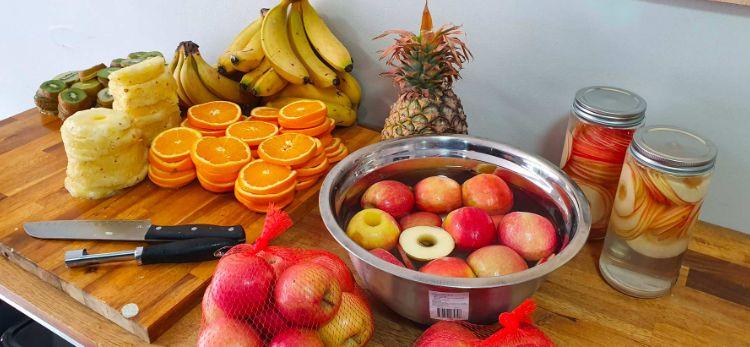



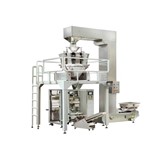




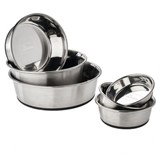

-160x160-state_article-rel-cat.jpg)





